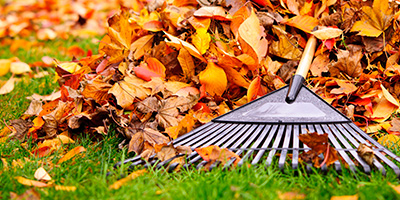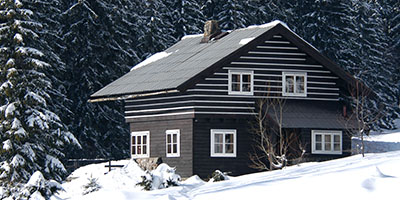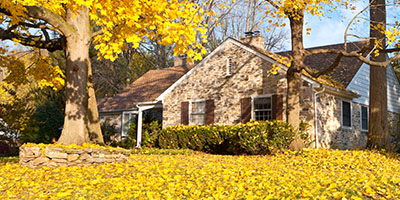Winterize Your Garden With These 7 Tips

How to Winterize Your Garden
As your garden harvest starts to slow down, it’s easy to think your care for it should also become passive. Many people wait until it warms up again to tend their flower or vegetable beds. But preparing your garden for winter will ensure a flourishing start to the spring.
When Should I Winterize My Garden?
Planning what to do with your garden at the end of a season depends on your region’s hardiness zone. Some plants can tolerate harsh growing conditions more than others, so it’s important to know which ones thrive best in your geographic area. Winterizing plants won’t require as much labor in warm regions.
Once you know which plants will survive in your area, you should start preparing perennials for winter one month before the first frost. Learn how to prepare your garden for winter with these 7 tips so you can welcome your perennials with ease.
What Should I Do With My Garden at the End of the Season?
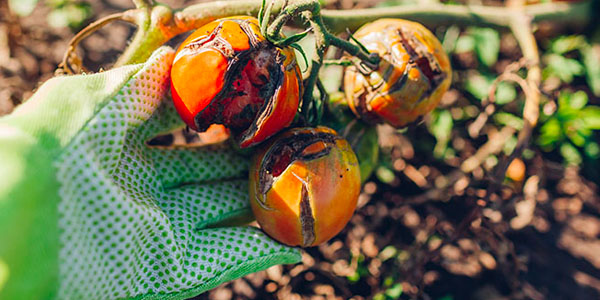
1. Harvest Remaining Vegetables
As the temperature begins to drop, so will your summer harvest. Winterizing plants begins with gathering what’s left of your produce and storing it for winter. The best canning method is dependent upon your crop. Generally, pressure canning preserves vegetables, while water-bath canning is better for fruit.
After you collect your healthy yield, you should cut back your plants for winter and clean up the remains. Letting plant residue sit invites insects, animals and diseases. If the plant material is healthy, compost it. Winterizing raised garden beds with leftover matter from this year can improve your garden next year. Do not compost any material that shows signs of disease.
2. Clean Up After Pests
Identify Infected Plants
If insects or fungus attacked your plants during the season, they may have transmitted plant diseases. Compost piles can’t kill off plant diseases in low temperatures. If your plant reveals dark leaf spots, fuzzy mold or a rotting root, it is probably infected. Dispose of these items in a designated trash bag so they can’t contaminate your soil.
Dig Up Weeds
You’ll start to see winter weeds germinate as early as late September. Hand pull or rake these weeds out. If you remove them in the fall, they can’t re-seed and sprout in the spring. You can also cover your garden with plastic for winter to prevent weeds from growing. Solarization with plastic will increase the soil temperature and control pests.
Identify and remove any invasive plants, as well. Completely removing nonnative species prevents disease disruption in spring. These species vary among regions, but some common types to watch for are English ivy, Japanese honeysuckle, Norway maple and Japanese barberry.
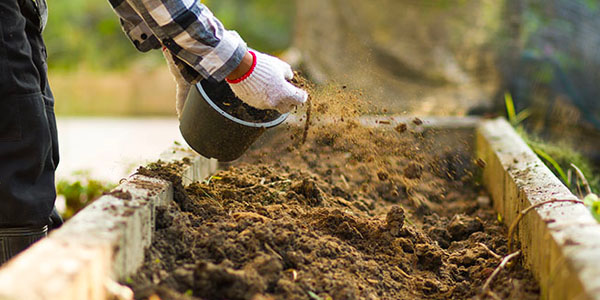
3. Winterize Raised Garden Beds
To proactively develop healthy soil, it’s important to prepare your garden for winter. If it sits for the winter without proper care, your crops are susceptible to weeds and disease. There are several options to help winterize your raised garden bed.
Add Compost
Boost your garden with a layer of nutrient-dense compost. If you don’t have your own compost pile, buy a bag of garden compost from your local hardware store. Add one or two inches over the top of the soil. You don’t have to work it deep into the soil. Just sprinkle it and give it time to implement itself.
Plant a Cover Crop
Another natural way to protect your garden’s soil from pests is to sow a cover crop. These plants cover soil during the winter months. Cover crops prevent ground erosion and weeds, while also adding organic feed. Oats, radishes and buckwheat are great for raised beds.

“Planting cover crops at the end of the growing season is a great idea for the home garden. They do the hard work of fixing nutrients in the soil and improving soil condition over the winter before spring planting. The best time to plant cover crops is in late summer or fall.”
Sarah Perreault | The Old Farmer’s Almanac
Have extra dirt lying around after your winter garden cleanup?
Check out our Complete Dirt Disposal Guide!
Lay the Foundation for New Garden Beds
Planning to put in a new garden bed next season? Cover the prospective garden with plastic for winter to kill the grass. This will tame any sprouting seeds and kill existing weeds. It will also protect your soil patch from erosion and frigid weather conditions.

“If you are planning a new flower bed for next spring, cover that area now with mulch or heavy plastic to discourage weed growth when the ground warms up in the spring.”
Sarah Perreault | The Old Farmer’s Almanac
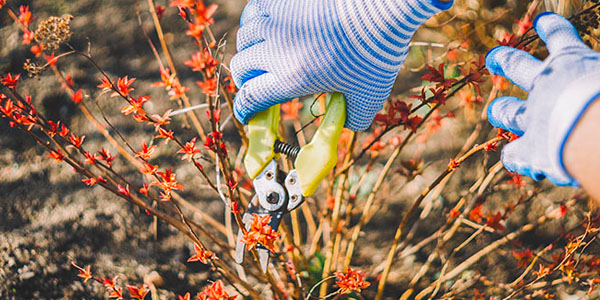
4. Prepare Perennials for Winter
Cut Back When Necessary
You should cut back plants for winter after the first frost. However, not everything should be trimmed. It’s generally best if you don’t clip perennials covered in seed heads. Identify this on the center of the flower. Seed heads resemble seeded stalks. Leaving flower seed heads can help feed the birds and other wildlife.

“Some perennials can be left to be cut back in the spring, but bee balm, clematis, delphinium, phlox, peony, hosta, salvia and yarrow are some of the perennials that do need to be cut back for winter.”
Sarah Perreault | The Old Farmer’s Almanac
The process of cutting back perennials is fairly simple. Locate dead flower heads and clip their stems near the base of the plant with sharp shears. Leave a remnant stub so that you’ll easily find your plants in the spring. You can add healthy trimmings to your compost pile.
Keep Watering
Winterizing plants doesn’t mean you get to ignore them until spring. While plants don’t need as much water in fall as they do summer, plan on keeping your plants hydrated going into winter. Take care not to overwater them. But if the soil feels dry, continue to water until temperatures fall below 40 degrees Fahrenheit.
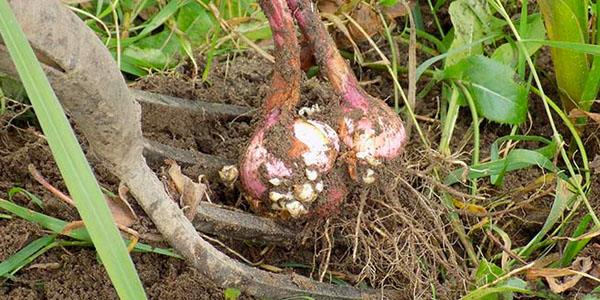
5. Preserve Tender Bulbs
Dig Up Bulbs
Preparing perennials for winter includes saving your tender bulbs for next year. Wait until the first frost to dig them up. Trim the leaves down before removal. Then, loosen the roots with a garden fork. Be careful not to damage the base of the bulbs. Dig up away from the base and gently shake off any excess soil.
Prepare Bulbs for Storage
Allow your bulbs to dry before storing. It may take a few weeks for the moisture to deplete. Once the bulbs are completely dry, trim the stems, leaving about two inches. Store them in a cool, dry place like a garage.

“There are some flower bulbs that will not survive cold winters and need to be dug up and stored indoors, such as canna, caladium, elephant ears, gladiolus, tuberous begonias and dahlias. After digging and lifting the bulbs, you need to store the bulbs in a cool, dry place. Place the bulbs in a cardboard box or another ventilated container between 2-inch layers of sand or sawdust, coir, or vermiculite. Make sure that none of the bulbs are touching each other.”
Sarah Perreault | The Old Farmer’s Almanac
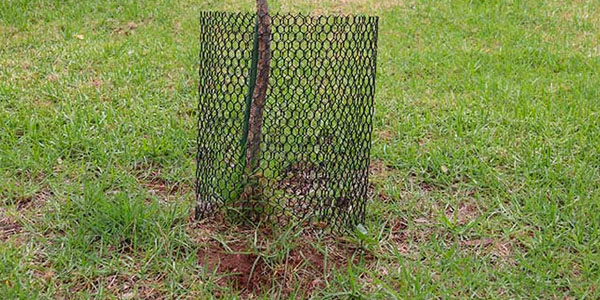
6. Shape Up Shrubs
Just like your perennials, continue to water your shrubs if the soil is dry. This is especially important for recently planted shrubs. If you want to keep small animals from damaging your shrubs or trees, wrap chicken wire around the bottom.
You can trim your shrubs as you notice broken branches or dead wood, but it’s best to wait until late winter. This way, they will not immediately regrow. Start by pruning any diseased branches. Then cut the overgrown branches, maintaining the natural shape of the plant.
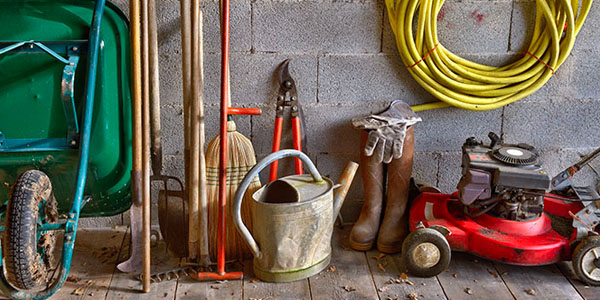
7. Clean Up Inorganic Material
As you continue to prepare your garden for winter, pick up any trash, stakes or equipment. Remove plastics and other matter so they don’t interfere with the rooting ability of your plants.
Prime Your Tools
Winterizing your garden includes taking care of your tools. Rinse off shovels, rakes and other tools with a hose. If you spot rust, try to scrub it off with a metal brush or steel wool. Once clear of dirt, apply a lubricating oil to your tools with a rag. With a little extra care and cleanup, they’ll return fresh next season.
Disconnect the Hose
As temperatures continue to drop toward freezing, remember to detach your hose from your outdoor spigot. Water expands when it freezes, so you could run the risk of your pipes bursting if you leave your hose attached. If you have a spraying nozzle or sprinkler system, remove it and drain out any excess water. Simply coil the hose and store these items in your garage or shed.

